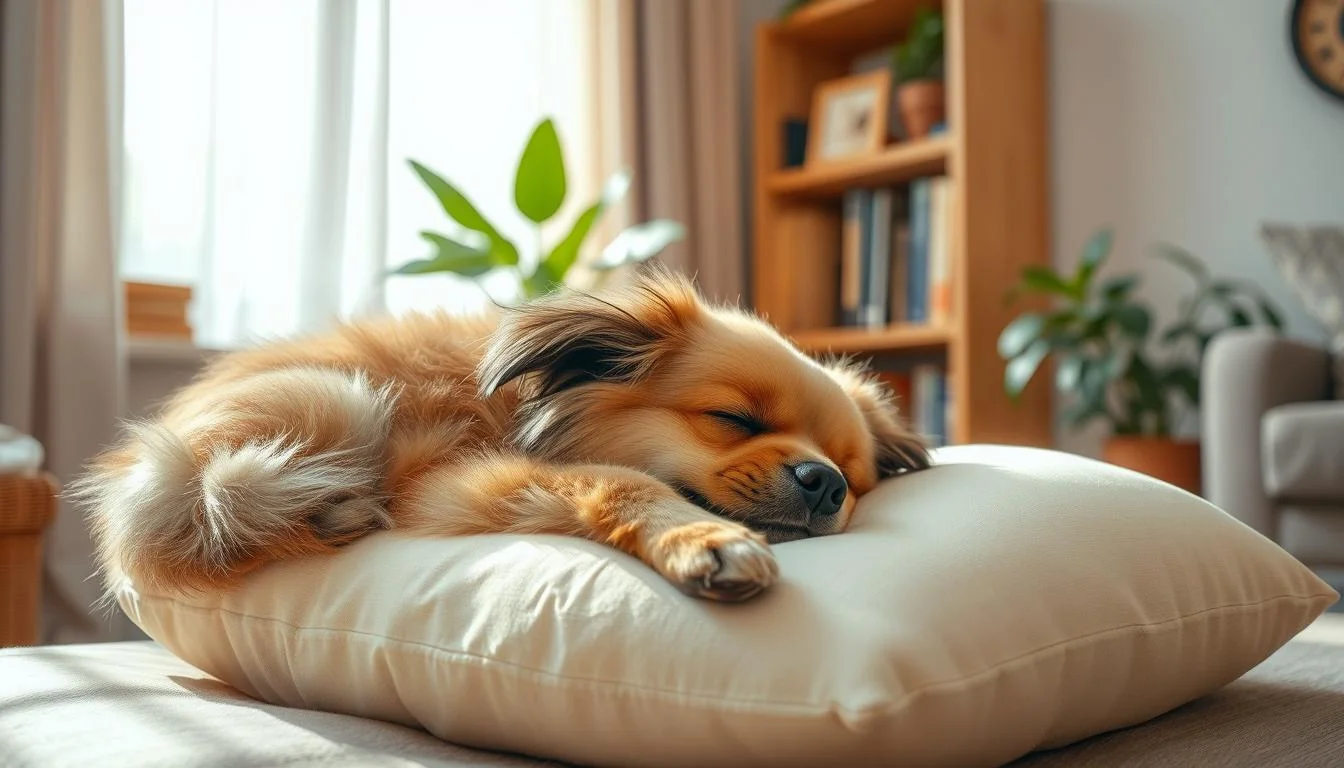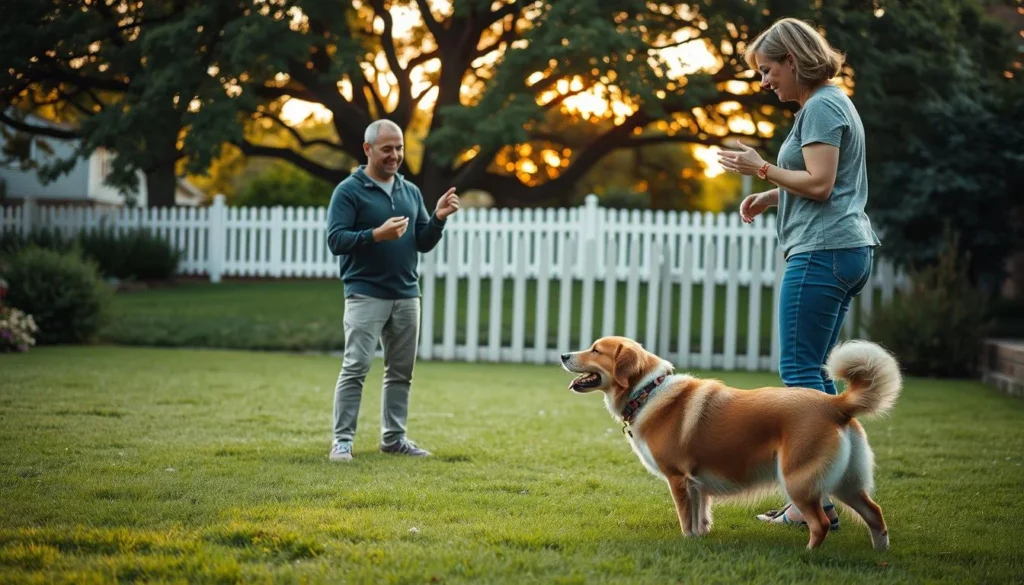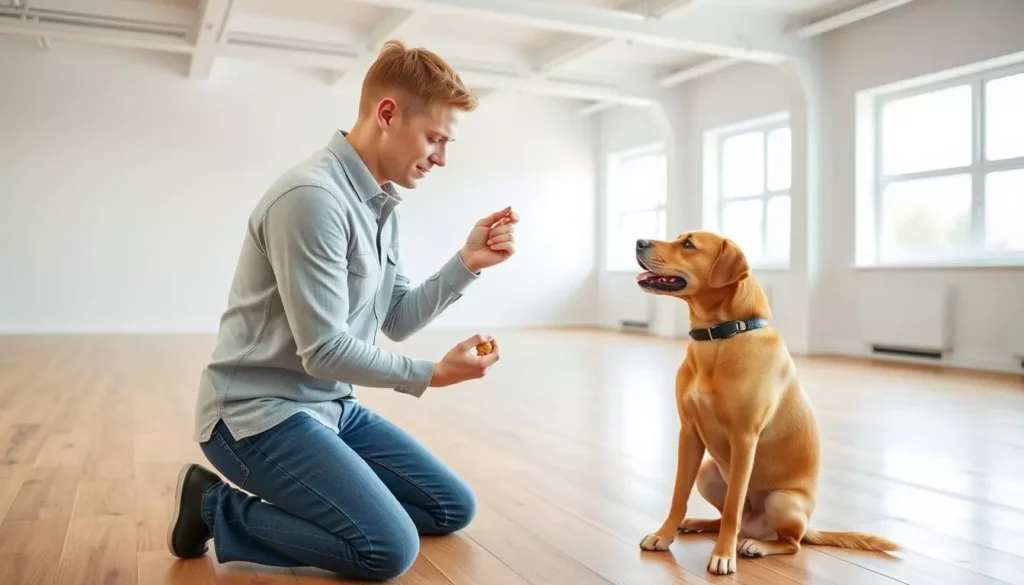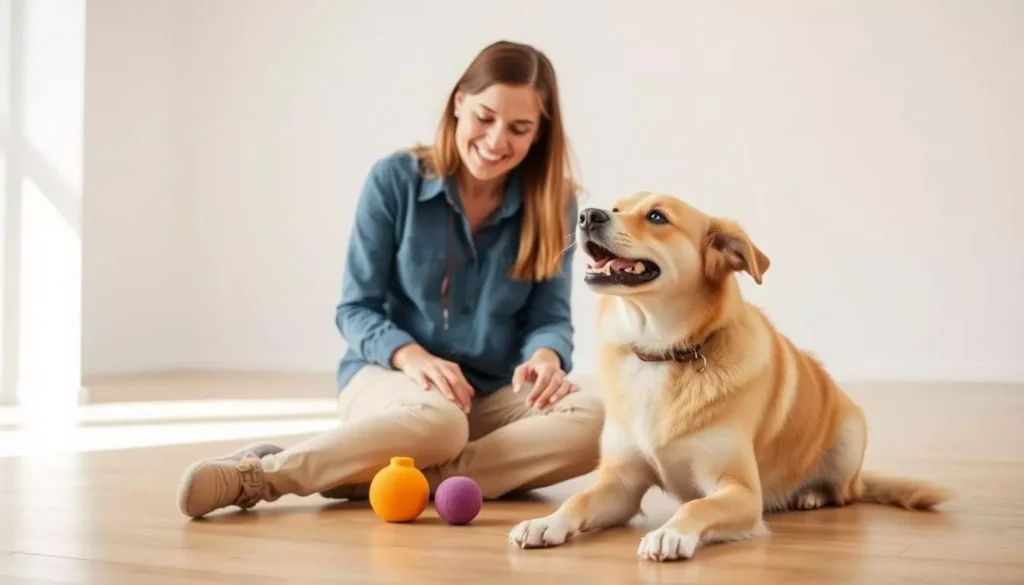I remember the first night my Labrador mix trembled through a thunderstorm. His eyes were wide, and his paws were restless. I felt helpless as he paced and panted, listening to the rain.
Dogs get anxious from many things like loud noises and changes in routine. They can also get scared during vet visits or when they get older. Signs they need help include barking too much, whining, and hiding.
It's important to spot these signs early. Anxious dogs can't learn or respond well. In this article, I'll share natural ways to calm dogs and help you soothe your pet. We'll also look at training tips and safe products to talk about with your vet.
Key Takeaways
- Recognize common anxiety triggers like separation, loud noises, and vet visits.
- Watch for behavioral signs such as pacing, trembling, and destructive actions.
- Early detection helps you try natural ways to calm dogs before prescription options.
- Combine training, routine, and evidence-backed supplements when appropriate.
- Work with your veterinarian to choose safe, effective calming strategies.
Understanding Why Dogs Get Anxious
Many owners are confused when their dog suddenly becomes fearful. Dogs can get anxious for many reasons. Knowing the cause helps me pick the right calming techniques for each dog.

I keep an eye out for common triggers. Things like separation anxiety, loud noises, vet visits, travel, new people or animals, and changes in routine can stress dogs out. Older dogs might get anxious due to age-related cognitive decline, so I check for these signs too.
Common triggers for anxiety
Triggers are important to recognize. Sudden loud noises, empty rooms when you leave, crowded dog parks, and car rides can upset dogs. Even small changes in routine can bother sensitive dogs.
Behavioral signs to watch for
Look for obvious and subtle signs of anxiety. Signs like excessive barking, whining, and chewing can be clear. Panting, pacing, trembling, hiding, and trying to escape are also signs of fear. Early signs include lip licking, pulled-back ears, and avoiding certain situations.
Why early recognition matters
Recognizing anxiety early makes it easier to calm dogs down and teach them coping skills. If anxiety persists, it can get worse and be harder to treat. Acting fast helps prevent it from getting worse and makes training more effective.
Before starting any calming techniques, a vet check is a good idea. Medical issues can look like anxiety or make it worse. A vet can check for pain, thyroid problems, or other conditions to ensure the right approach.
| Trigger | Common Signs | Quick Action |
|---|---|---|
| Separation | Whining, destruction, escape attempts | Short departures, crate training, safe toys |
| Loud noises | Trembling, hiding, panting | Create quiet space, sound masking, desensitization |
| New people or dogs | Avoidance, growling, accelerated breathing | Controlled introductions, positive reinforcement |
| Routine changes | Loss of appetite, pacing, clinginess | Maintain schedule, gradual transitions |
| Age-related decline | Confusion, restlessness, night pacing | Vet assessment, environmental adjustments |
what calms dogs
I've seen anxious dogs calm down when I mix regular care with special help. A calm base comes from routine, exercise, and training. These teach dogs to control themselves. Small changes in their space also help.
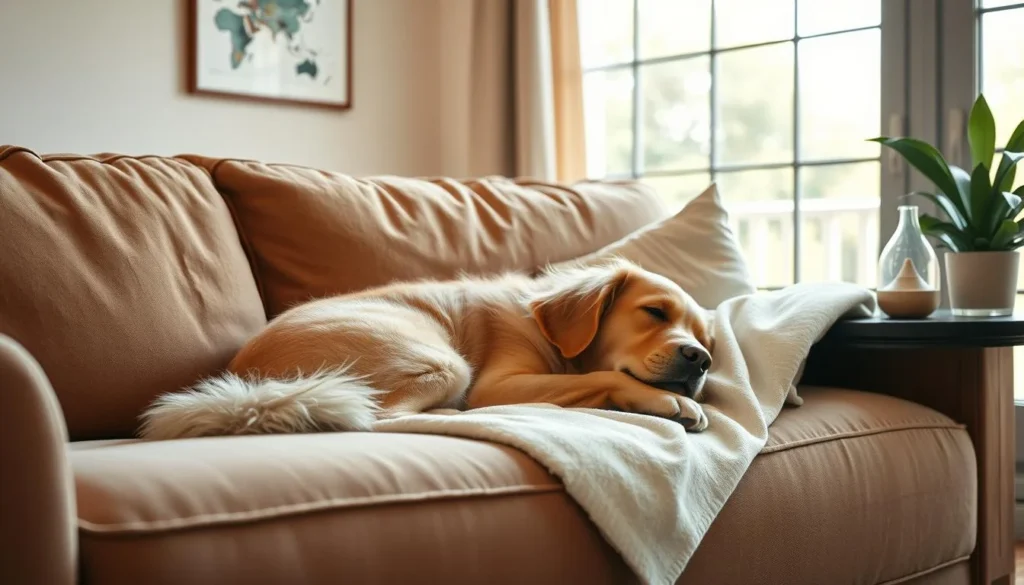
Overview of effective calming approaches
Begin with a regular schedule for walks, meals, and sleep. Dogs feel secure with a predictable day. I suggest short training sessions to teach a reliable "settle" cue. This skill lets dogs relax when told to.
Changing the environment can also reduce stress. I use white noise, calming music, and a quiet spot for dogs scared by loud noises. For fear, I use desensitization and counterconditioning to change their reactions over time.
When needed, I add proven aids. Probiotics, L-theanine, melatonin, and alpha-casozepine help with calmness. Pheromone diffusers and pressure vests like Thundershirt are also useful in certain situations.
Combining strategies for better results
One method alone is not enough. I mix training, enrichment, environment, and supplements. This multi-faceted approach works better than one tactic.
Use calm games and foraging to keep their minds busy without increasing energy. Pair these with short training that rewards quiet. Over time, I see dogs relax more reliably.
Make changes slowly and monitor progress. If anxiety is severe, work with a vet or certified behaviorist. A thoughtful mix gives dogs the best chance to feel calm and safe.
Creating a Predictable Routine and Safe Space
Helping a nervous dog is easier with structure. A set schedule for meals, walks, training, and sleep helps a dog feel steady. When my routine stays the same, my dog settles faster and reacts less to surprises.
Small changes can cause stress. I keep mealtimes and walks the same, especially before vet visits or grooming. This steady rhythm helps calm my dog when new events happen. If plans change, I introduce the shift slowly to avoid anxiety spikes.
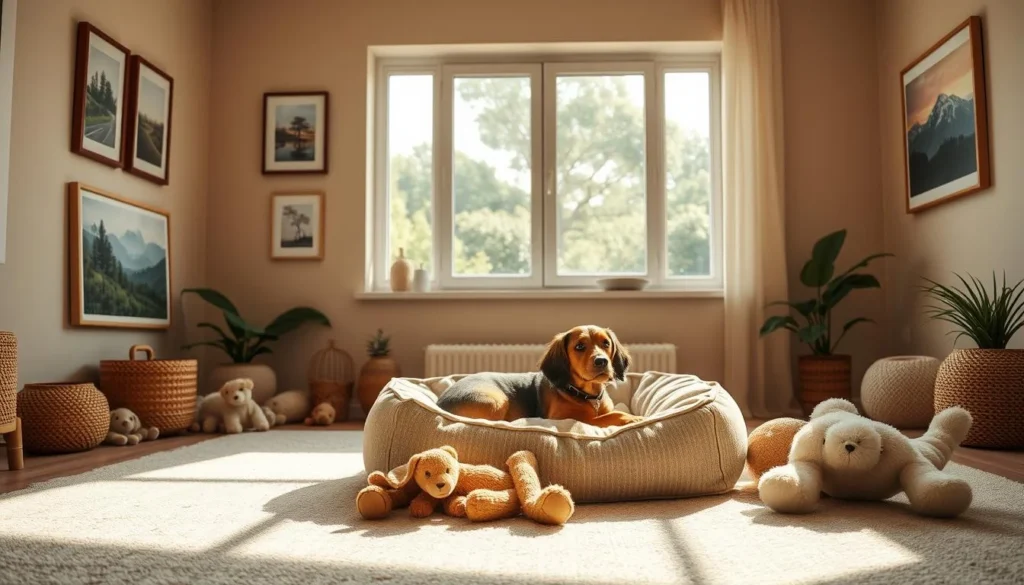
Benefits of a consistent schedule
A predictable routine builds trust. Regular cues help a dog know what to expect, lowering tension. I use fixed times for activity and rest, so my dog learns to anticipate comfort.
Consistency supports training goals. Short training sessions with the same daily rhythm help my dog learn commands reliably. This training becomes a tool for stress relief because it gives them tasks that focus energy and reduce worry.
Designing a calming safe place
I create a quiet nook with a comfy bed or mat, favorite toys, and treats. Sometimes, I use a crate if my dog sees it as a refuge. The key is positive pairing: I reward my dog for choosing the spot, making it a place they want to use.
Portability is important to me. I keep a small mat and a familiar blanket in the car or at a friend’s house. This way, my dog has the same safe feeling away from home. I teach a go-to cue and reward visits gradually, so the space becomes linked to comfort, not confinement.
Combining the safe place with calming aids strengthens the effect. I use a pheromone diffuser in the room and a food puzzle once my dog is comfortable. Practicing the space before stressful events lets my dog learn that it is a refuge. These steps make it easier to achieve stress relief for dogs during storms, travel, or vet visits.
| Element | What I Do | Benefit |
|---|---|---|
| Daily Routine | Set fixed times for meals, walks, and sleep | Reduces unpredictability and lowers anxiety |
| Safe Place | Provide bed, crate option, treats, and a cue | Creates a reliable retreat for calm behavior |
| Portability | Take a mat or blanket to other locations | Ensures familiar comfort away from home |
| Positive Pairing | Use rewards and short sessions to train the spot | Associates the place with good experiences |
| Calming Aids | Use pheromone diffuser and food puzzles | Enhances the safe space and aids stress relief for dogs |
Exercise, Play, and Mental Stimulation to Calm Down Dogs Naturally
Movement and thoughtful play are great for easing a worried dog. Simple walks, fetch, tug, and dog sports like agility or rally release endorphins. This helps wear off extra energy.
Regular activity is key, not one long session. Short, frequent exercise keeps behavior steady and prevents nervous energy spikes. For busy families, two brisk walks plus a play session can make a big difference.
Mental enrichment is also important for settling dogs. Puzzle toys, snuffle mats, and nose work turn feeding into a calming task. These activities challenge the brain without overexerting the body.
Training can be part of play when it's a game. Nose targeting, “watch me,” and simple scent games sharpen focus. I mix rewards and short problem-solving drills to keep attention positive.
Food-dispensing toys like KONG products, Zogoflex options, and lick mats are great before stressors. A frozen, stuffed KONG can keep a dog busy for 15 minutes or more. For puppies, heartbeat-and-heat toys mimic littermate comfort and ease separation anxiety.
Calming games for dogs include hide-and-seek with treats, slow scent trails, and low-energy tug. I choose games that promote thinking over frantic movement. This helps the dog learn to settle after play.
Calming Techniques and Relaxation Methods for Dogs
I share practical steps to help dogs feel safe and calm. These methods include training, gradual exposure, and kind handling. They help you soothe a dog without stressing them more. Short sessions and clear rewards build confidence over time.
Teaching settle and emotional self-control
I start teaching a "settle" cue in quiet rooms with few distractions. Use short, frequent sessions and high-value treats or a favorite toy. Reward when your dog lies down and stays relaxed for a second or two.
Practice the cue in different spots at home, then near mild distractions. Gradually increase duration and distance. This training becomes a tool you can use when you need to calm your dog in real life.
Desensitization and counterconditioning
I break fearful triggers into tiny, manageable steps. Introduce the trigger at a level that keeps your dog below their stress threshold. Pair each step with rewards so the dog learns to expect something positive.
Move slowly and monitor body language. If your dog shows stress, drop back to a level that feels safe. For severe fears, I recommend working with a certified trainer or a veterinary behaviorist.
Pairing desensitization with enrichment items such as food toys or pheromone diffusers can speed progress. Keep expectations realistic because very anxious dogs may need lower arousal before food or toys become useful.
Never force or punish
I avoid punishment after the fact because it raises anxiety and erodes trust. Never use flooding—forcing a dog to face a fear at full intensity. That approach risks trauma and stronger avoidance behaviors.
Choose gentle, reward-based steps instead. Calm handling and patient progression help a dog learn new responses without fear. That approach shows you how to soothe a dog while keeping their emotional safety first.
| Technique | How I use it | When it helps |
|---|---|---|
| Settle cue | Short sessions, rewards, generalize to new places | Everyday calm moments, vet visits, guests |
| Desensitization | Small steps, gradual exposure, pair with treats | Noise fears, doorbells, car rides |
| Counterconditioning | Swap negative reaction with positive outcome | Builds new emotional responses to triggers |
| Enrichment pairing | Use food toys, puzzles, pheromones during training | Boosts learning; best once arousal is lowered |
| Non-punitive approach | Never punish or force; use rewards and retreat | Prevents escalation and supports trust |
Natural Ways to Calm Dogs: Supplements, Diet, and Grooming
I want to share practical ways to help your dog feel calmer. We'll look at supplements, diet changes, and grooming you can do at home. These methods work best when combined with training and a regular routine.
Common natural supplements and evidence
I search for supplements backed by research. Probiotics like Bifidobacterium longum BL999 are good for the gut-brain connection. Alpha-casozepine, found in Zylkene, helps with mild anxiety in dogs.
L-theanine is in products like Solliquin and Composure. Melatonin and L-tryptophan are calming in some diets. Plant extracts like valerian are also used.
Remember, supplements might take four to six weeks to work. They affect dogs differently. Always check for the NASC seal and talk to your vet before starting. Never give human products with xylitol to dogs.
Nutrition and calming diets
Diet can help calm dogs naturally. Some diets include calming nutrients like tryptophan. These diets support the gut-brain connection for better behavior.
When reviewing diets, I look for balanced nutrition and scientifically-backed ingredients. Changing your dog's diet should be done slowly. Always talk to your vet to avoid nutritional gaps or drug interactions.
Grooming as a calming ritual
Grooming can be a calming ritual that strengthens your bond. Gentle brushing and slow handling release endorphins. I teach owners to keep grooming sessions short, reward calm behavior, and speak softly.
Pair grooming with calming elements like a quiet room and soft treats. For scent-sensitive dogs, use unscented products or vet-approved sprays. Small, consistent grooming sessions build trust and make it a natural way to calm dogs.
- Check labels and vet guidance before giving calm down treats for dogs or supplements.
- Consider therapeutic diets for ongoing anxiety or gut-brain support.
- Use brushing and short grooming rituals to reduce arousal and improve cooperation.
Calming Products and Aids for Dogs
I look at tools owners use to calm stressed dogs. I explain how these products work, when to use them, and what to watch for. My goal is to help you find the right calming aids for your dog and your lifestyle.
Dog-appeasing pheromones
Products like Adaptil mimic dog pheromones. They come as diffusers, sprays, and collars. Some studies and owners say they help with travel, storms, or vet visits.
Adaptil spray lasts about four to five hours. Don't spray it directly on your dog. Let the alcohol smell go away for 15 minutes before use.
For those who prefer natural options, ALZOO offers plant-based diffusers. Use it in the room where your dog feels stressed. Pair it with behavior training for a complete calming plan.
Pressure vests and Thundershirt
Pressure vests, like ThunderShirt, provide gentle pressure. Some dogs find it comforting. But, research is limited, and results vary.
Make sure the vest fits right. Use the two-finger rule. Never force your dog to wear it. Start with short, positive sessions, using treats and praise.
Interactive toys and food puzzles
Interactive toys and puzzles can distract dogs during stressful times. They help build positive associations. Choose puzzles that take at least 15 minutes to solve.
Freeze-stuffed KONGs and snuffle mats are good for many dogs. Use these toys before stressful events to create calm routines.
What to know about product claims
Many calming products don't have strong scientific backing. Marketing can be misleading. Always research products well and look for NASC-sealed supplements for quality.
Talk to your vet before trying new products. Be aware of placebo effects. Use products as part of a bigger plan that includes training and environment changes.
When to Talk to Your Veterinarian or a Behaviorist
I look for signs that my dog's anxiety isn't getting better. If it gets worse, starts suddenly, or causes harm, it's time to see a vet. They can check for health issues and suggest more than just home remedies.
Red flags and when professional help is needed
I take red flags seriously. If my dog tries to escape, hurts itself, gets aggressive, or panics when alone, I need help fast. If home remedies and exercise don't work, I call a vet or behaviorist.
Acting early stops bad habits from forming. A behaviorist can create a plan to help my dog feel better. I don't wait for things to get worse before seeking help.
Possible veterinary interventions
A vet can check for pain or health issues that might look like anxiety. They'll talk about safe medicines and how they work with behavior plans.
I ask about safe supplements and special diets for stress relief. I want to know about any medicine interactions and how long it will take to see results.
| Concern | Who to Consult | Common Interventions |
|---|---|---|
| Severe or escalating anxiety | Veterinarian, veterinary behaviorist | Medical exam, prescription medication, referral for behavior therapy |
| Aggression or self-harm | Veterinary behaviorist, certified trainer | Targeted behavior modification, safety plan, possible medication |
| Poor response to basic strategies | General veterinarian, behaviorist | Review of calming aids for dogs, tailored desensitization, supplements if appropriate |
| Possible medical drivers | Veterinarian | Diagnostics, treatment of underlying condition, coordinated care plan |
| Goal: steady, lasting stress relief for dogs | Veterinarian + behaviorist collaboration | Combined medication and behavior program, ongoing follow-up, family training |
Conclusion
I started by identifying triggers and early signs of anxiety in my dog. Understanding why they get anxious is key to making changes. I then focused on creating a steady routine and a calm environment to reduce stress.
These basics are crucial for what calms dogs. They make other steps more effective.
I combined training, enrichment activities, and gradual desensitization to help my dog. I used calming techniques like counterconditioning and short, positive practice sessions. These methods helped my dog feel safer and more confident over time.
When looking at calming aids for dogs, I researched ingredients like L-theanine and melatonin. I also looked for NASC seals and always checked with my vet first. Working with a vet or certified behaviorist helped me create a safe plan for my dog's wellbeing.

